The world can change in just nine seconds... that said in the current context of the pandemic could be bad news, but in this case no: it's just the (ultra-fast) time that the T-Roc Convertible it takes time to swing the hood behind your back and allow up to four occupants to “win the sky”. It takes 11 seconds to close again, another two seconds because it is “uphill”, but the operation includes, in both directions, locking and unlocking the canvas cover.
This is provided that the T-Roc is stationary or moving at a speed of up to 30 km/h (less than some other convertibles with soft tops on the market, which are around 50 km/h).
This T-Roc Cabrio becomes the only convertible in the entire Volkswagen range because the Beetle Cabrio (which was produced in Puebla, Mexico, since 2003) reached the end of its life in 2019, the Eos (which was made in Portugal) finished its career in 2015, while the Golf Cabrio ceased production in 2016, after 770 000 units assembled in four generations of this model.
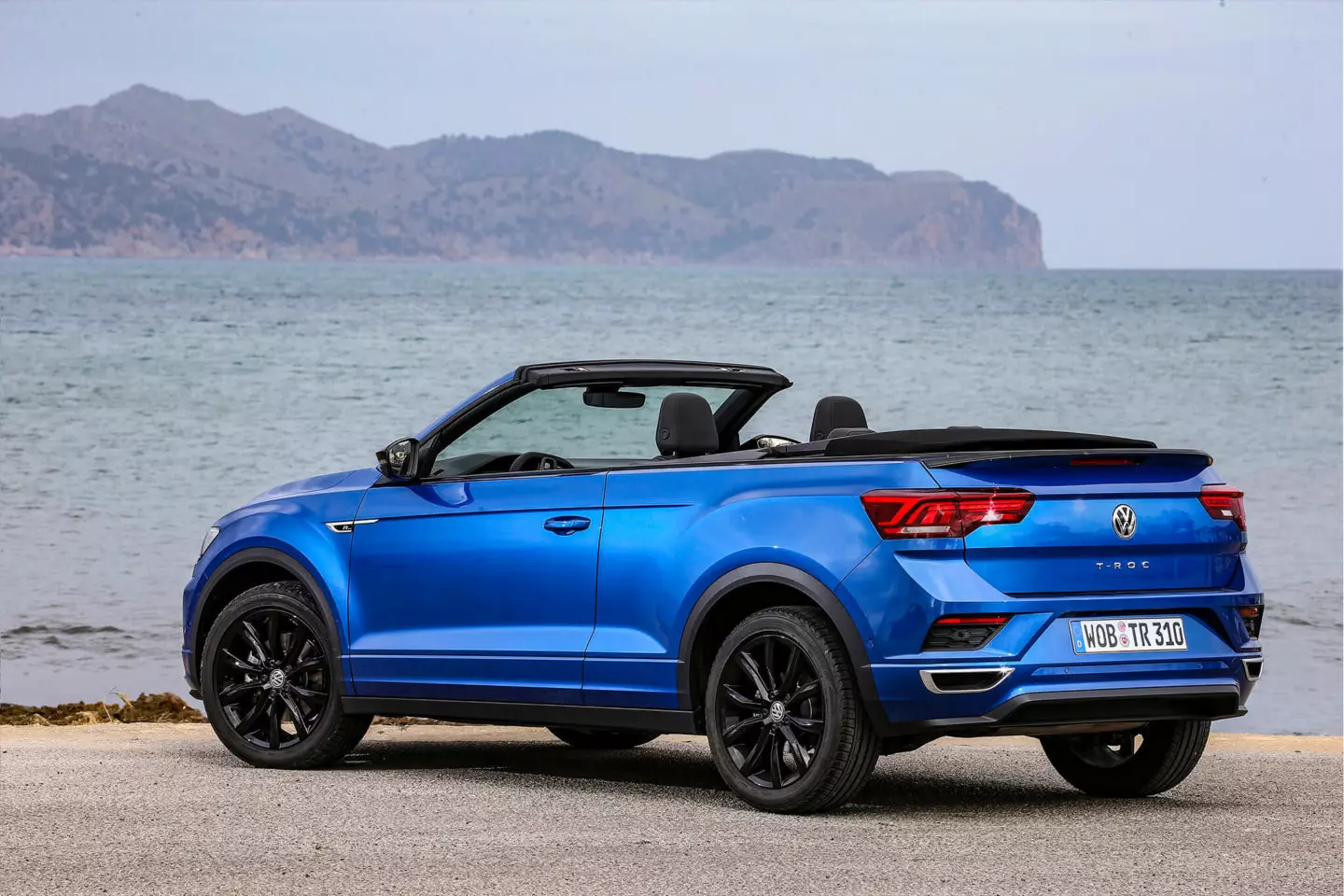
The first convertible SUV of the German brand “is born”, by the way, in Osnabruck, in the former premises of the Karmann bodybuilder (which went bankrupt in 2010 and the factory was transferred to Volkswagen) which began by producing the Beetle Cabrio in the distant year of 1949, having made the transition to the Golf(I) Cabrio in 1974 and subsequent generations.
Subscribe to our newsletter
Now this industrial center specializing in convertibles was only occupied with manufacturing the Porsche 718 Cayman, so it was the natural choice to cradle the T-Roc Cabrio after a relatively limited investment.
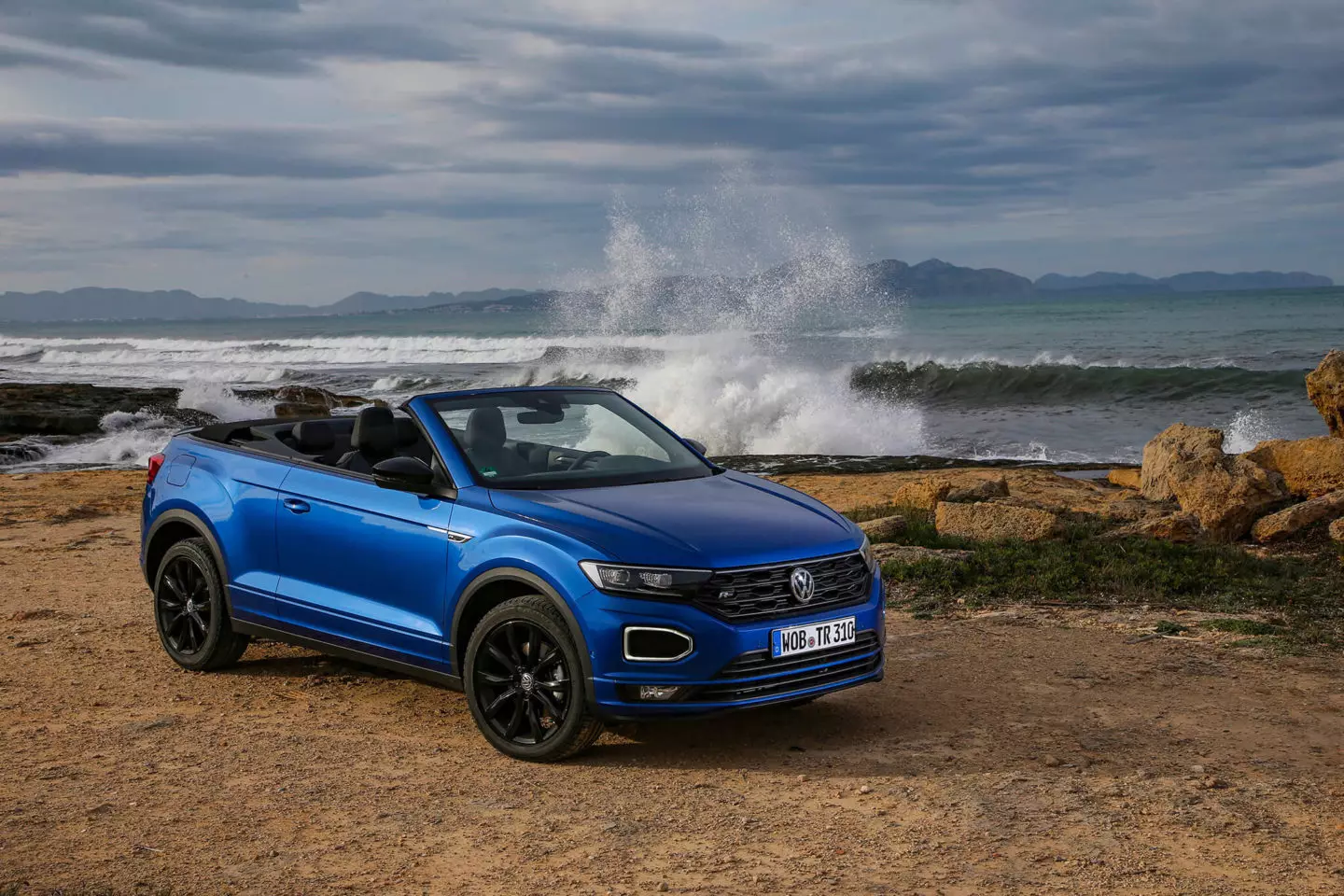
100% automatic opening in nine seconds
The canvas canopy has three layers and folds in a "Z" when the weather invites you to open it, not needing to bring a cover over it and using a plastic eave behind the headrests of the second row seats to avoid that it bulges with the movement of the air (which also explains how it is possible that the operation of putting on or taking off the hood is so fast).
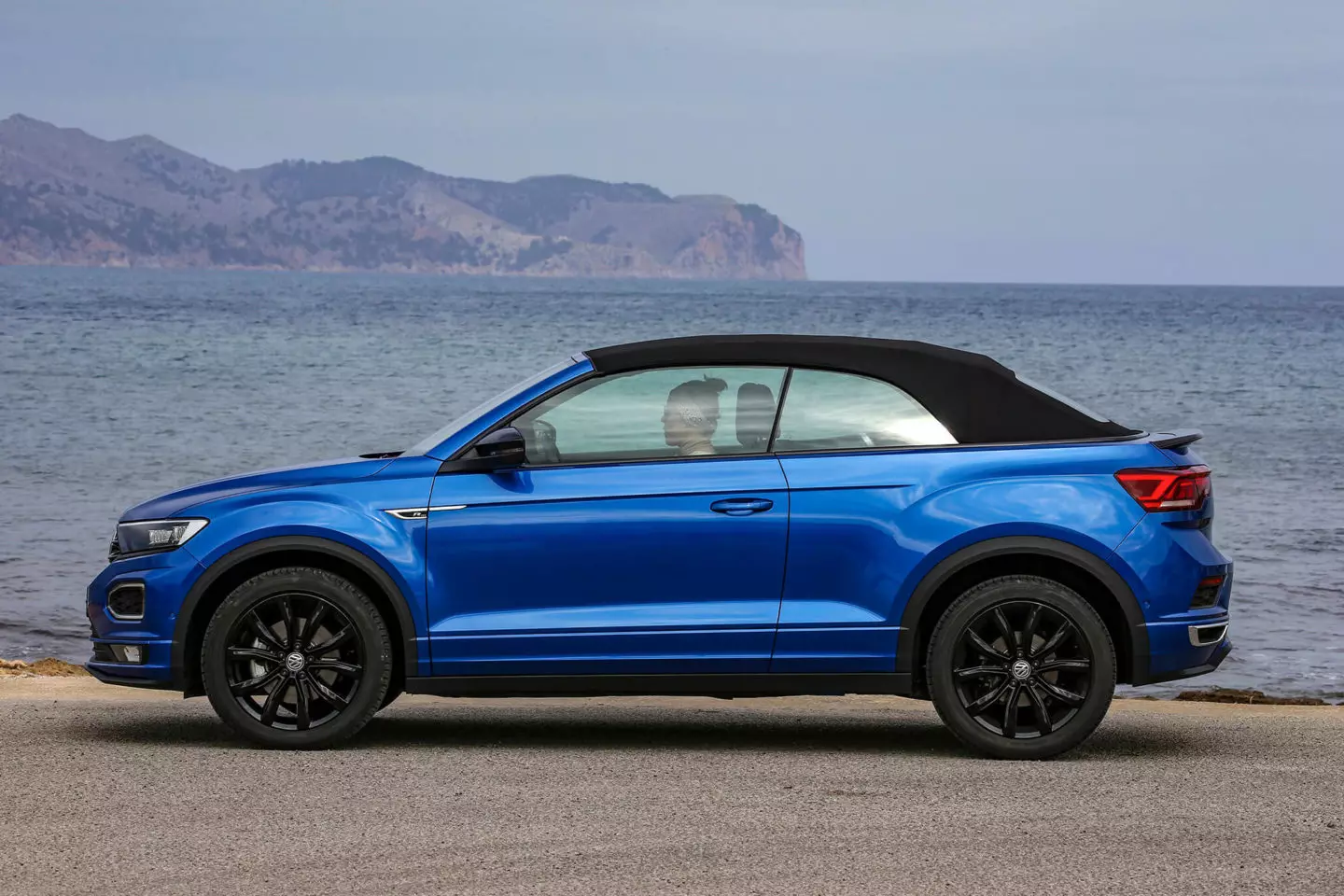
Opens in 9 seconds. Start counting… 1…
For those who wish, it is possible to purchase, as an extra, a windbreak to mount behind the front seats, which reduces turbulence, but prevents the use of the two rear seats.
The back of these can be folded down to increase the capacity of the trunk — which drops from 445 l, with the top on top, to 284 l with the same at the bottom — which communicates with the passenger compartment to improve its functionality (pity the load plan is quite high).
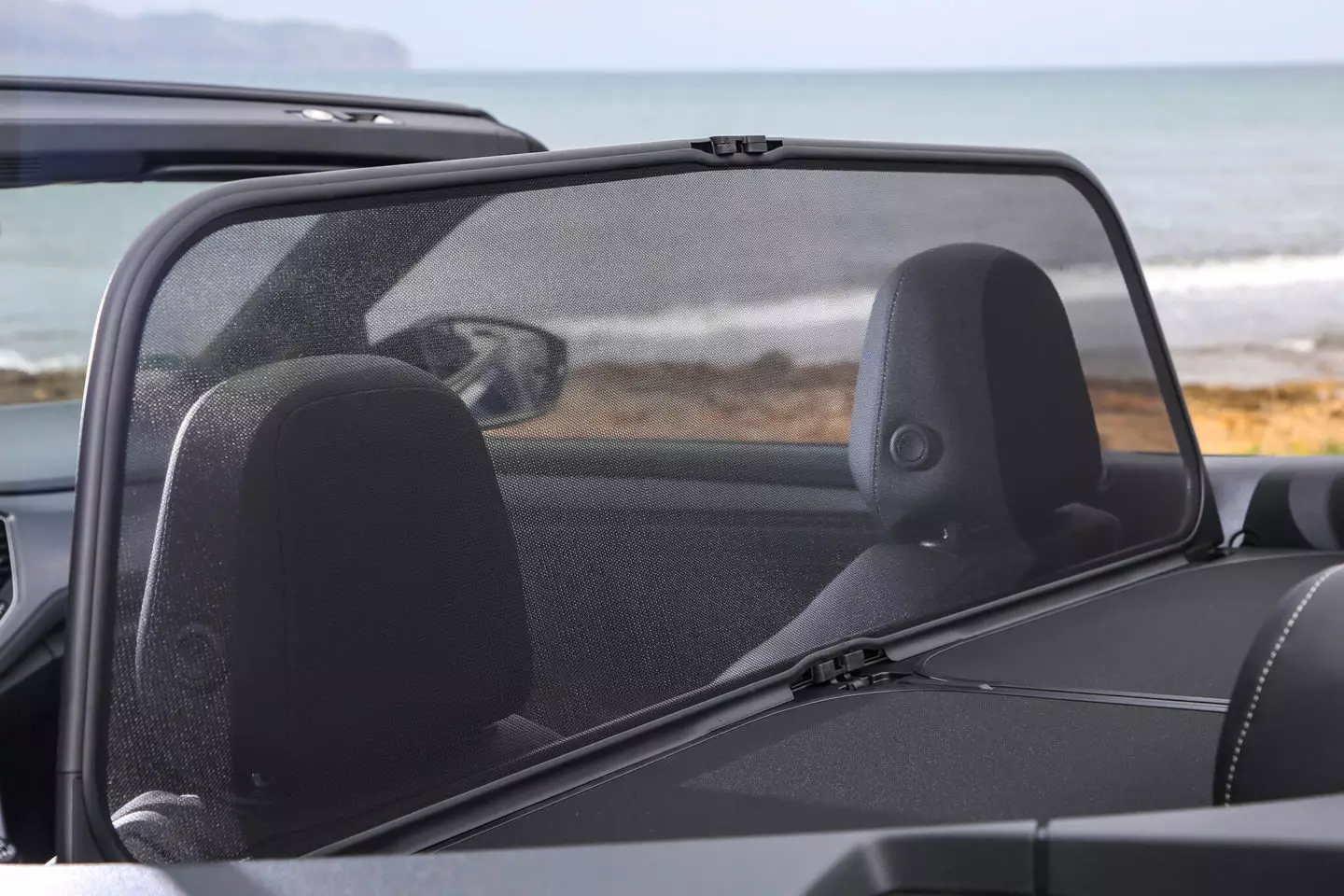
Optional windbreak
If, on the other hand, the T-Roc Convertible is being used by four people, it's good to know that the rear seats have quite reasonable space — the convertible's wheelbase is 4 cm longer than that of the regular T-Roc — for occupants up to 1.80 m tall. The back is also less vertical than is often the case in other convertibles, with the consequent disadvantages in terms of comfort (in this case, the central tunnel on the floor doesn't bother so much because there are only two seats and no one sits in the middle).
The views to the outside in this second row are also favored by the fact that the seats are a little taller (2 cm) than the front ones.
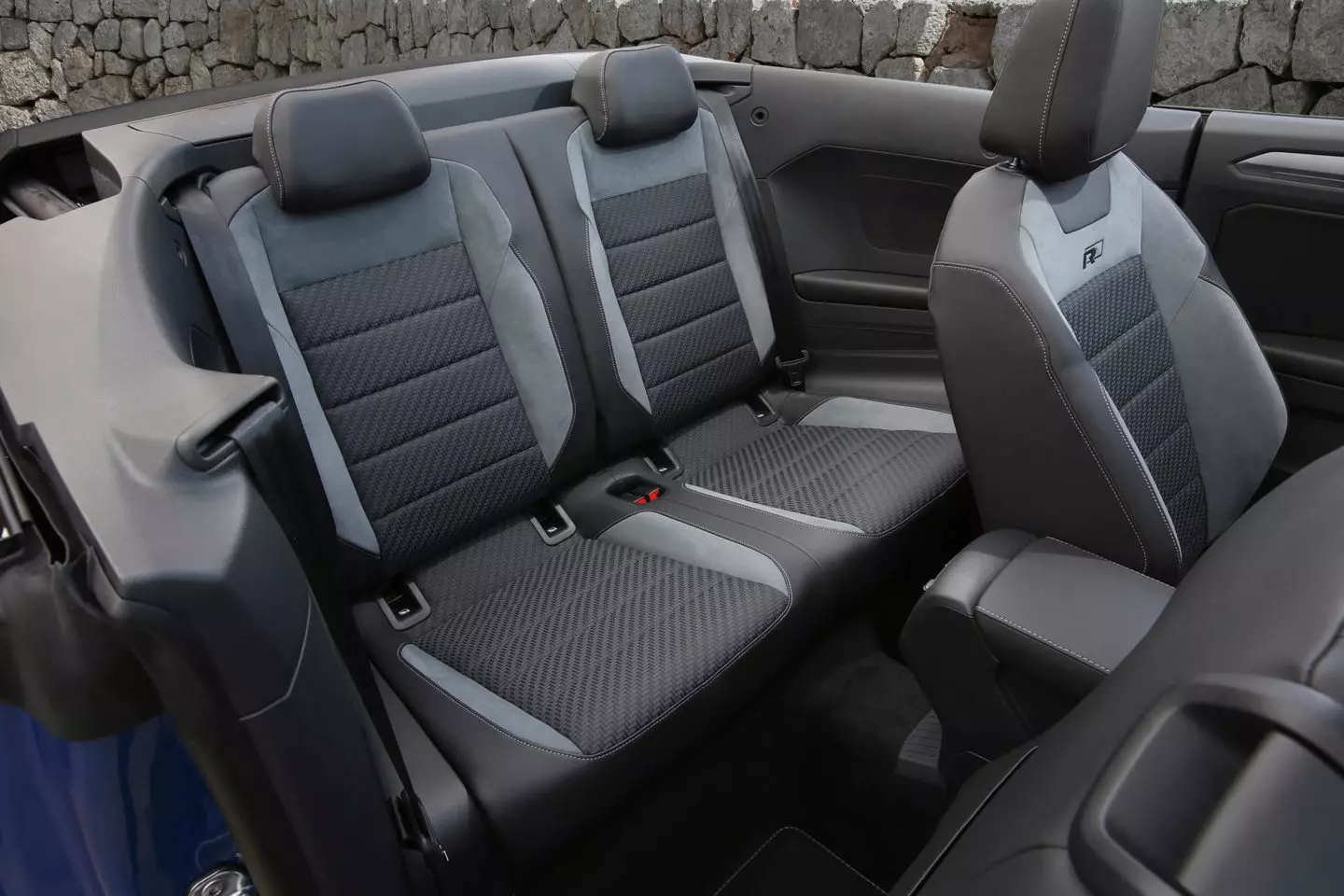
As is common in this type of bodywork, there are two built-in protection arches behind the rear seats that shoot vertically in the event of an imminent rollover (which act together, in this eventuality, with the reinforcements in the frame of the windshield and the front pillars to minimize the consequences of the accident).
At the wheel all the same
In the driver's position there is less novelty. On the positive side, the central area of the dashboard is directed towards the driver including a central entertainment monitor perfectly integrated into the dashboard. Some competitors, even recent ones, have monitors placed above or in front of the face of the dashboard that harm the image of quality, with a certain air of accessory equipment acquired afterwards and not something that was born with the car.

But the quality of the dashboard coverings and the door panels leaves something to be desired, with hard plastics that harm the final perceived quality. One would expect a little better because, in a Volkswagen dealership, the T-Roc ends up being easily compared to a Golf, this one full of quality materials on the dashboard and doors, both being sold for comparable prices (and not coming out nothing favored, either, when rated next to a Polo, clearly cheaper).
The instrumentation is analogue in the input version (Style) and digital (10.2”) in the more equipped (R-Line), while in the info-entertainment central screen there is also a simpler version and another more sophisticated, tactile and with more functions. The seats are wide and comfortable but could have a little more lateral support in this R-Line version we're driving.
Only two engines…
The T-Roc Convertible can only have two engines: the 1.0 TSI, three-cylinder, 115 hp, or the 1.5 TSI, four-cylinder, 150 hp, which is what equips this test unit, in the case associated with the six-speed manual gearbox.
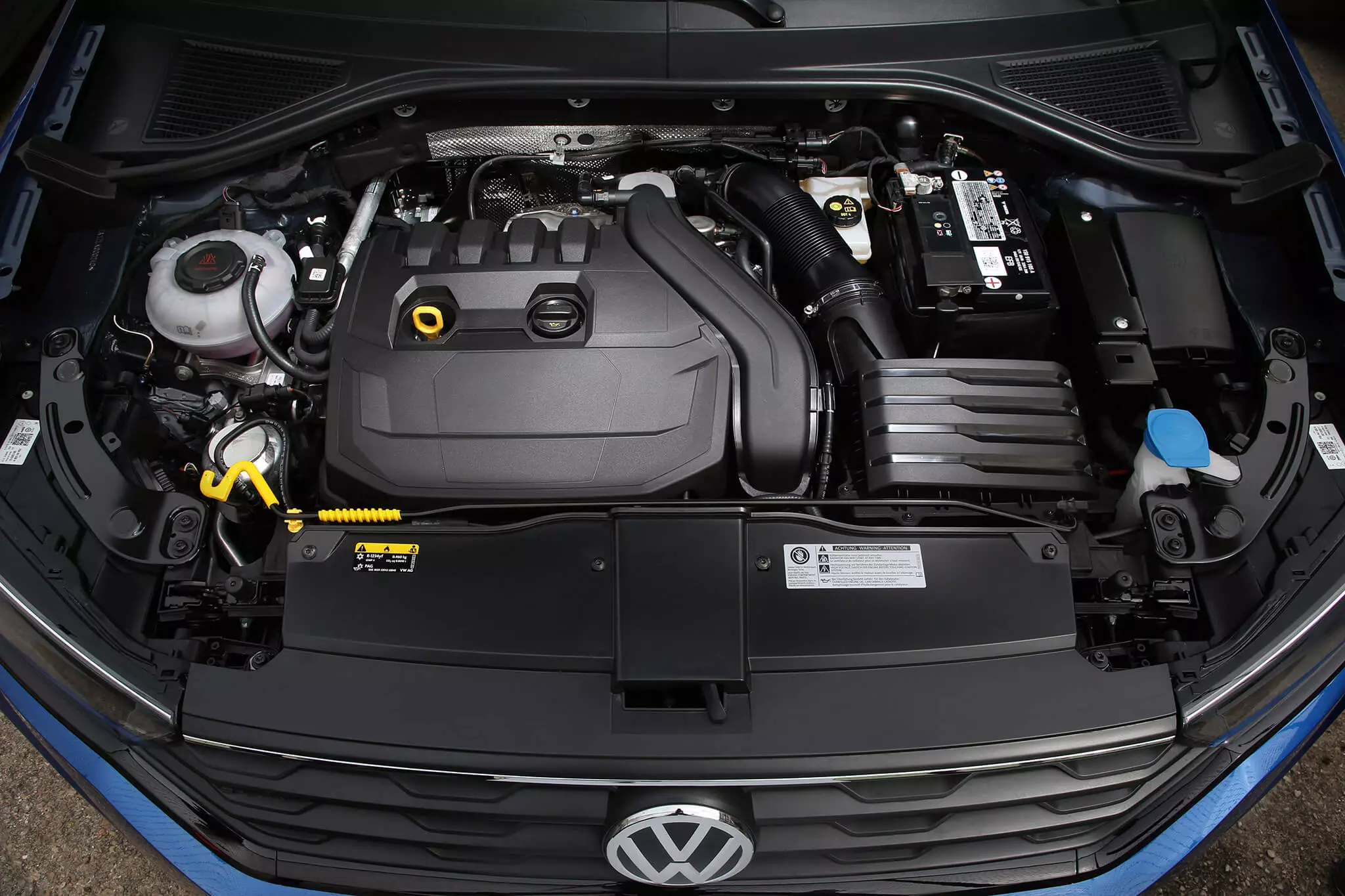
1.5 TSI
The 1.5 TSI — EA211 Evo — comes equipped with a two-cylinder deactivation system, which can operate at low or no throttle loads to reduce fuel consumption. In addition to the manual transmission, the T-Roc Cabrio also has a seven-speed dual-clutch automatic transmission available.
This R-Line version is easily recognizable right on the outside by the darkened headlamps, the R-Line logo on the grille, the front fog lamps and body-coloured bumpers. But also in the interior for having steel pedals, sport seats with electrical adjustment of the lumbar support and also the most advanced screens (instrument and infotainment).
Suspension verified
But there's more: the suspension has a sporty fit, 10mm closer to the ground, and the shock absorbers can be electronic, allowing you to vary between a more comfortable or more stable roll (using Comfort, Normal driving modes for this purpose , Sport, Eco or Individual).
It is also important to note that the rear suspension is multi-arm independent, contrary to what happens with the closed body version of the T-Roc, which uses a more elementary torsion axle at the rear, except for the versions with four-wheel drive.
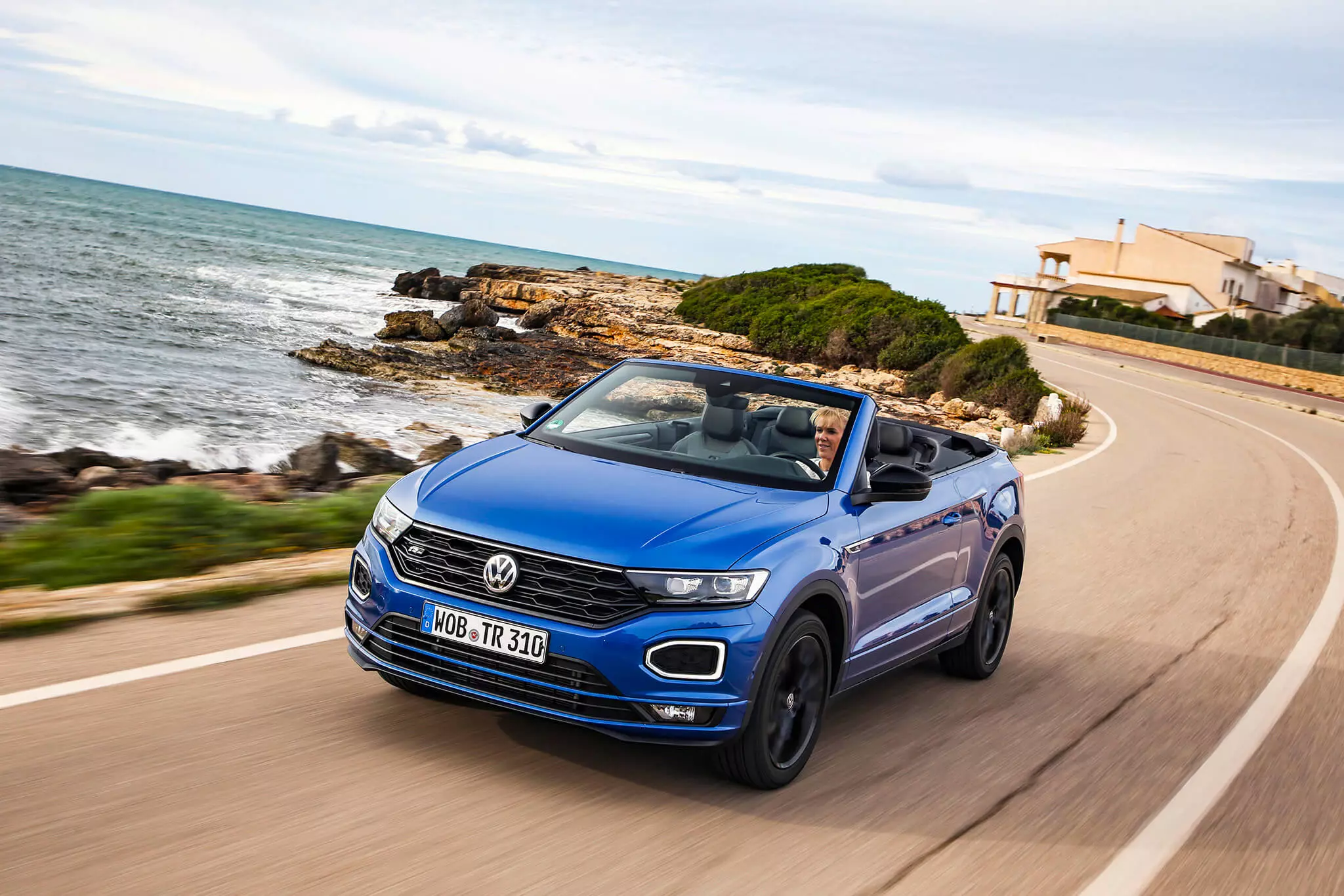
The "secret" for a behavior that really pleases is revealed by the way this T-Roc Convertible manages to mold itself very well to the type of road and the driver's mood because, in addition to this possibility of varying the damping, in the driving modes themselves if they can discern the intervals between each mode much more easily than in many other cars (even from the Volkswagen group) in which there is practically no behavioral variation when going from Normal to Sport mode.
In succession of curves on secondary roads, it also helps the fact that this version is equipped with the progressive steering system, which is more communicative and direct than the “normal”, and only 2.1 turns at the wheel from top to top (vs 2, 7) mean that, with small movements of the arms, the driver can complete almost all maneuvers.
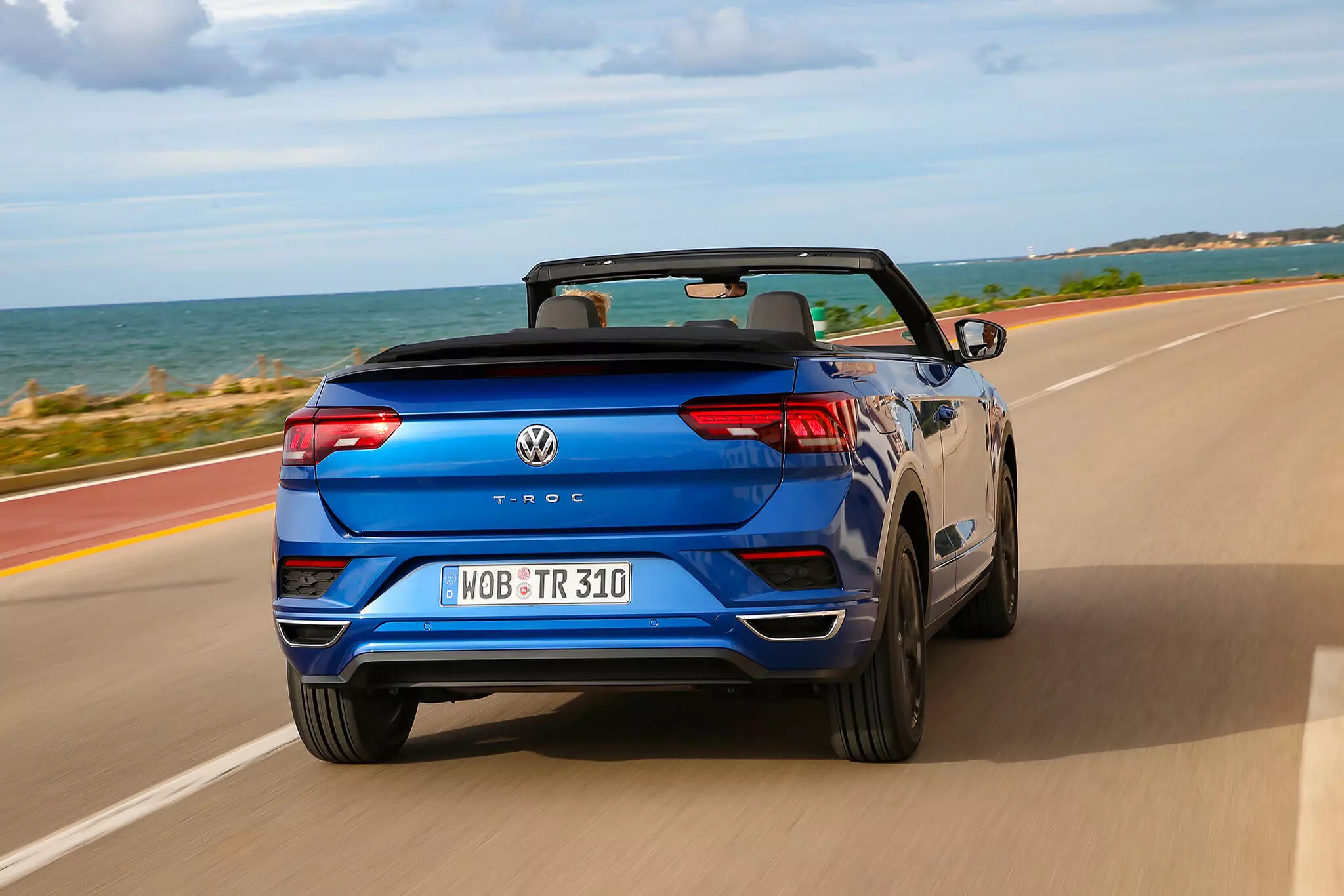
And once again the rear passengers feel well cared for because this rear suspension is more comfortable on rough terrain than the semi-rigid axle, which also helps to minimize the noise that the car's structure can make in these conditions and throughout. the fact that the top was “cut off”.
Even with 200 kilograms more on its back than in the non-convertible version, the T-Roc Convertible 1.5 TSI manages to respond with reasonable aplomb, helped by a well-tiered case (and with a quick, silent selector) and full torque delivery. at 1500 rpm, although it is noted that accelerations cost him a little more (it is 1.1 seconds slower from 0 to 100 km/h, that is, 9.6 s in, instead of 8.5 s of the “no -cabrio”).
And consumption also suffers, having been very close to 8 l/100 km in that experience at the wheel, when the homologated average is 5.7.
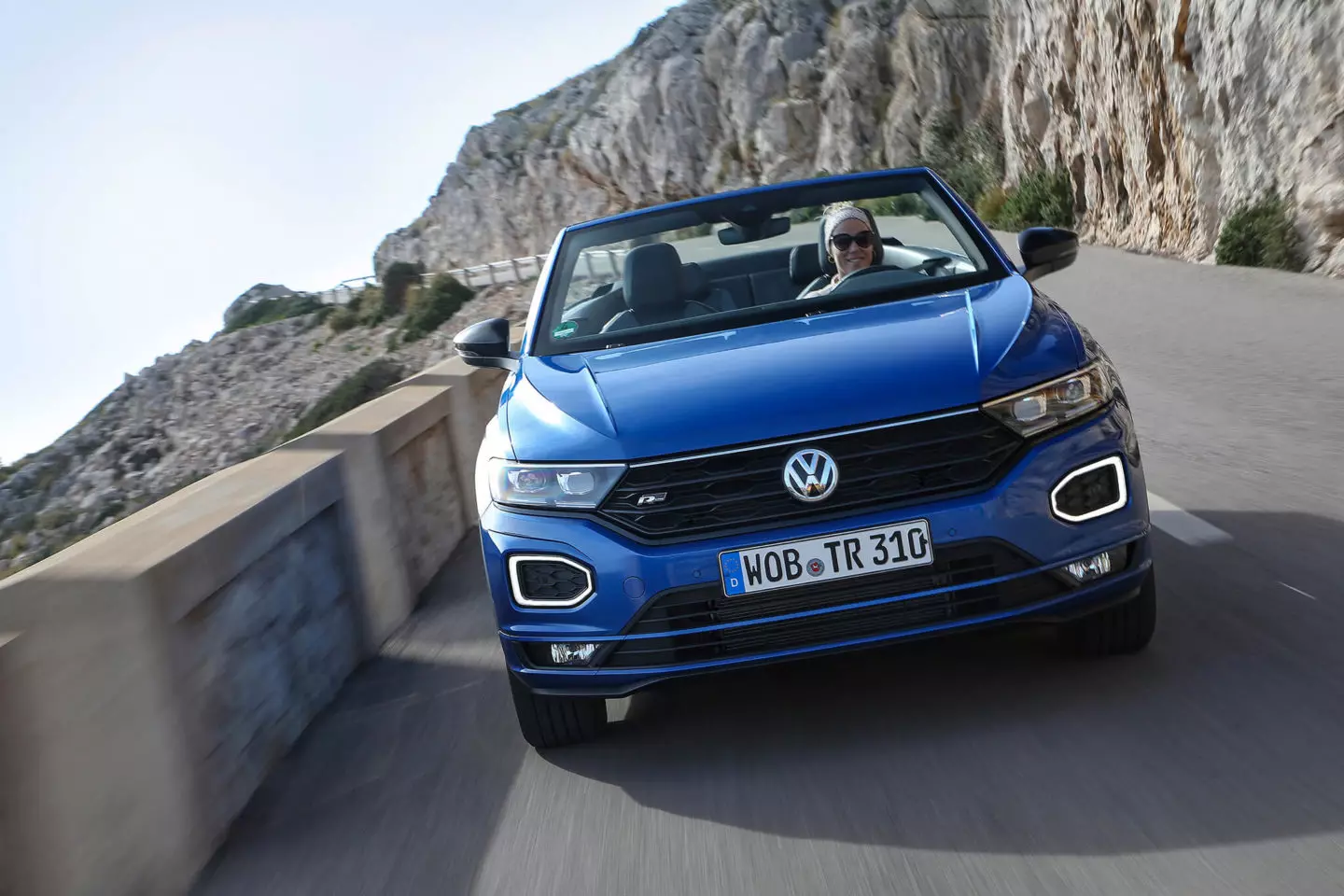
Technical specifications
| Volkswagen T-Roc Convertible 1.5 TSI | |
|---|---|
| Motor | |
| Architecture | 4 cylinders in line |
| Distribution | 2 ac/c./16 valves |
| Food | Injury direct, turbo |
| Capacity | 1498 cm3 |
| power | 150 hp between 5000-6000 rpm |
| Binary | 250 Nm between 1500-3500 rpm |
| Streaming | |
| Traction | Forward |
| Gear box | Manual, 6 speed |
| Chassis | |
| Suspension | FR: Regardless of MacPherson type; TR: Independent, multiarm |
| brakes | FR: Ventilated discs; TR: Disks |
| Direction | electrical assistance |
| Number of turns of the steering wheel | 2.1 |
| turning diameter | 11.1 m |
| Dimensions and Capabilities | |
| Comp. x Width x Alt. | 4268 mm x 1811 mm x 1522 mm |
| Length between the axis | 2630 mm |
| suitcase capacity | 280-445 l |
| warehouse capacity | 50 l |
| Weight | 1524 kg |
| Wheels | 225/40 R19 |
| Provisions and consumption | |
| Maximum speed | 205 km/h |
| 0-100 km/h | 9.6s |
| mixed consumption | 5.7 l/100 km |
| CO2 emissions | 130 g/km |
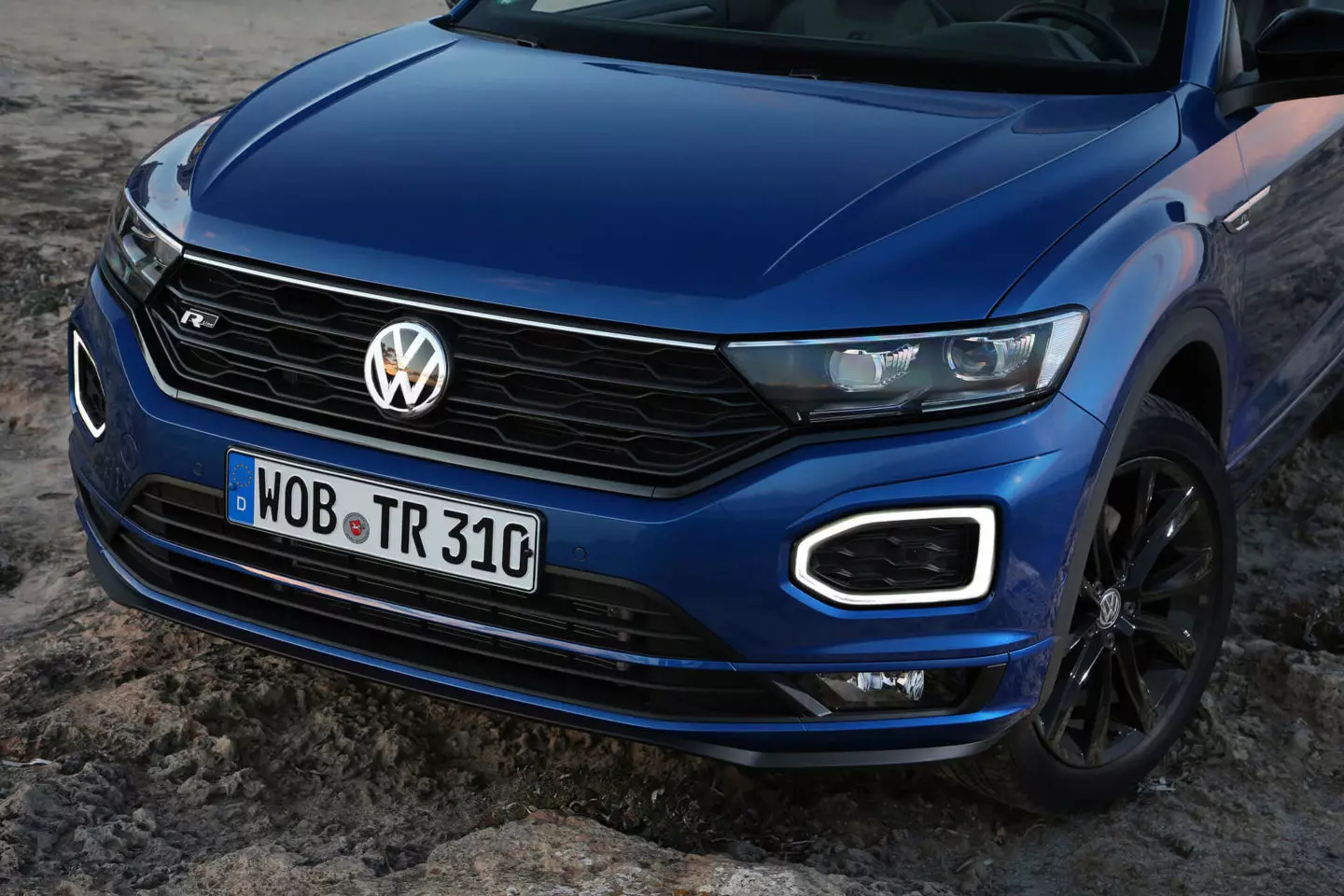
Authors: Joaquim Oliveira/Press Inform.
